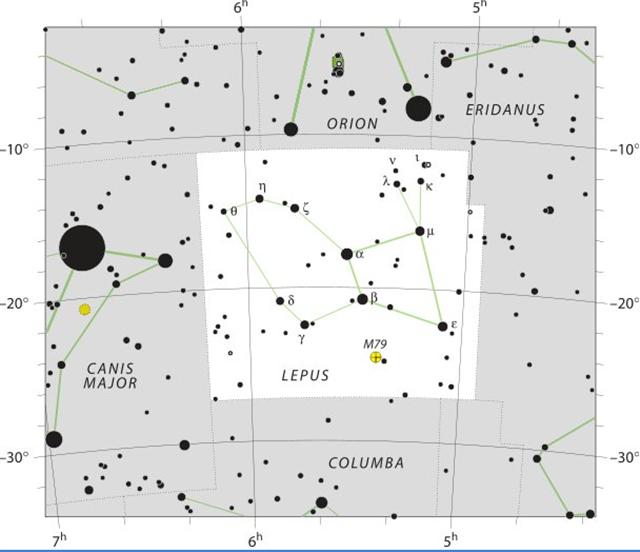|
4. The Hare of Flamsteed must be standing on 'land', with the right foot of Orion hidden behind her:
The end of Eridanus is hidden behind the left foot of Orion and we can therefore guess the intention of Flamsteed was to indicate a relationship between the River and the Hare with Orion in the middle as the central 'person'. We ought to compare λ at the tip of the left ear of Lepus with γ at the toes of her right foot:
There is no prominent star in Lepus at Ga1-20 and Ga1-21, perhaps because Lepus was identified with Moon, whereas Sun should be at the stars corresponding to the positions of the 'sky' pyramids in Giza. Many ancient peoples saw the figure of a Hare in the face of the moon, and from Ian Ridpath's Star Tales (http://www.ianridpath.com/startales/contents.htm) I have copied the following relevant information: "Hyginus tells us the following moral tale about the hare. At one time there were no hares on the island of Leros, until one man brought in a pregnant female. Soon, everyone began to raise hares and before long the island was swarming with them. They overran the fields and destroyed the crops, reducing the population to starvation. By a concerted effort, the inhabitants drove the hares out of their island. They put the image of the hare among the stars as a reminder that one can easily end up with too much of a good thing." "Hermes placed the hare in the sky because of its swiftness, Eratosthenes tells us. Both Eratosthenes and Hyginus referred to the remarkable fertility of hares, as attested to by Aristotle in his Historia Animalium: ‘Hares breed and bear at all seasons, superfoetate (i.e. conceive again) during pregnancy and bear young every month. They do not give birth to their young all at once, but bring them forth at intervals.’ ..." |
||||||||||||||||||||||||||||||||||||||||||||||||||||||||||||||||||||||||||||




